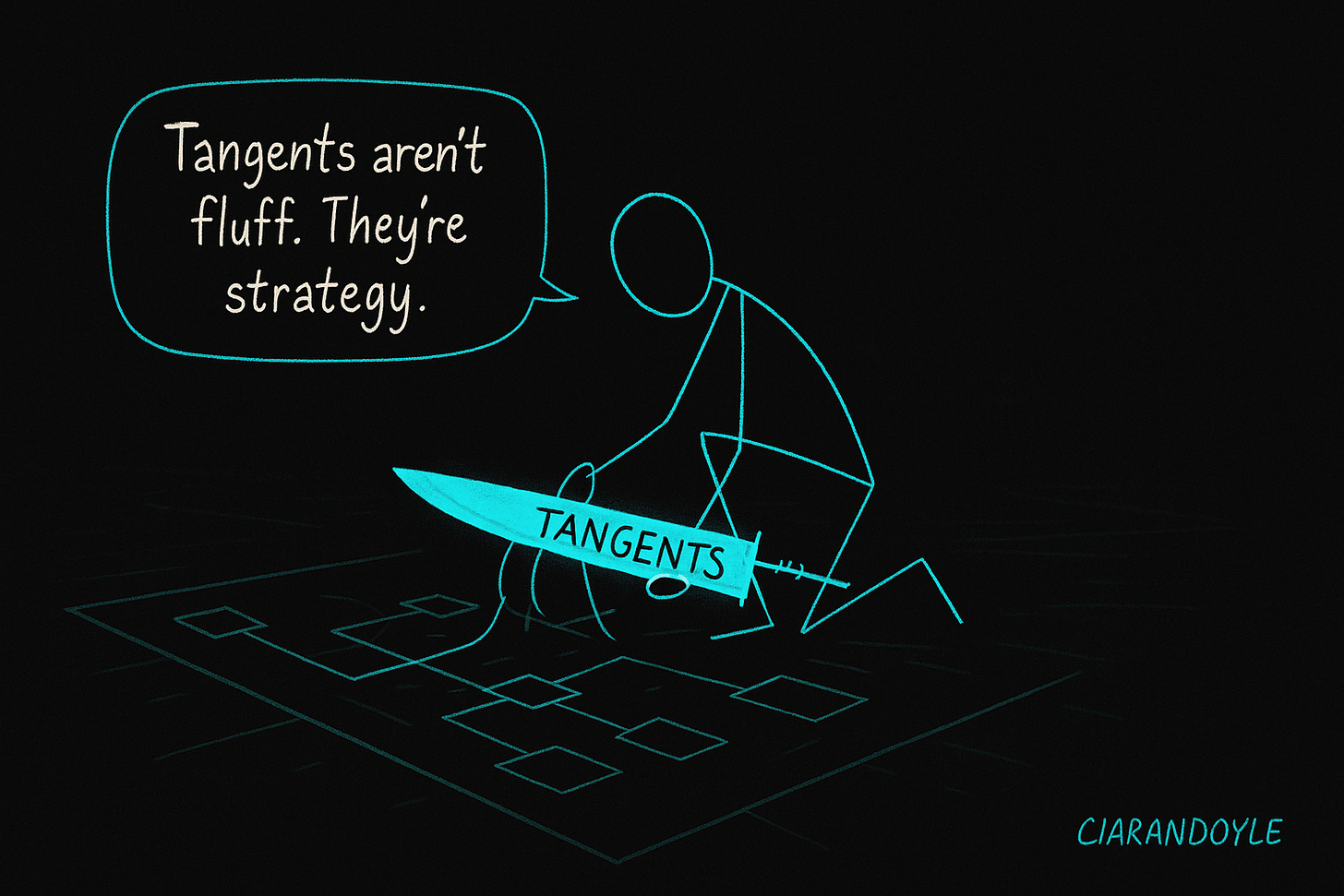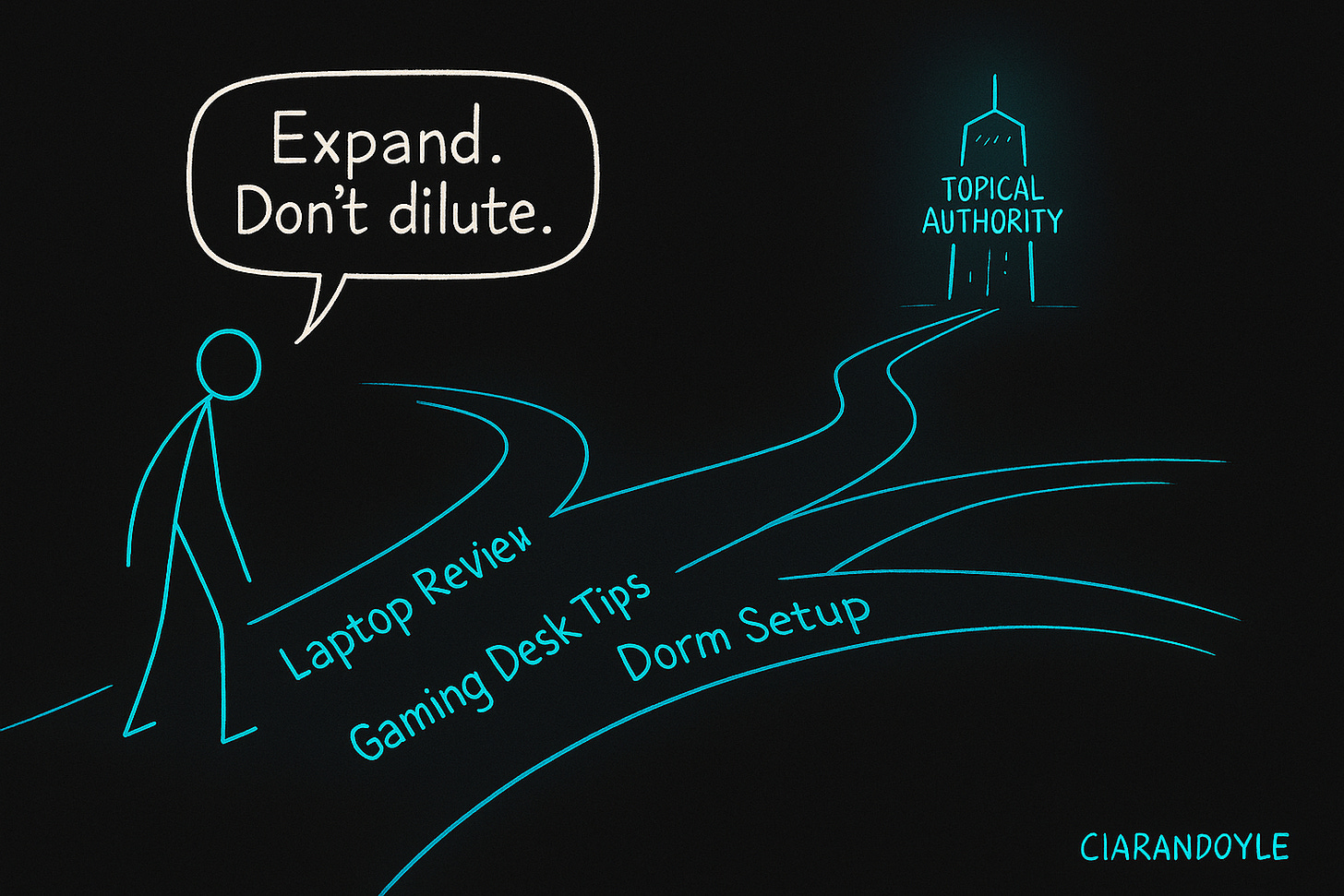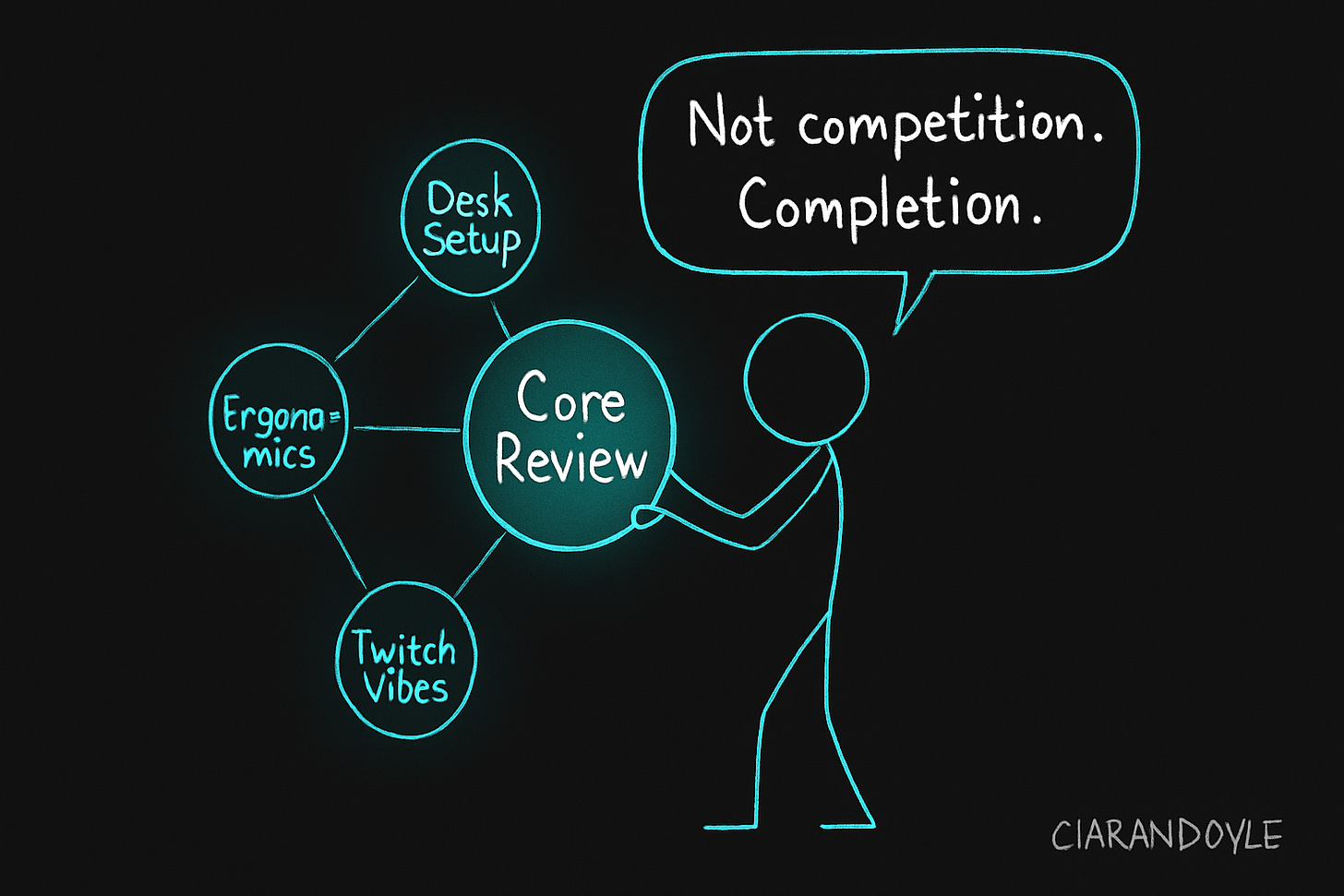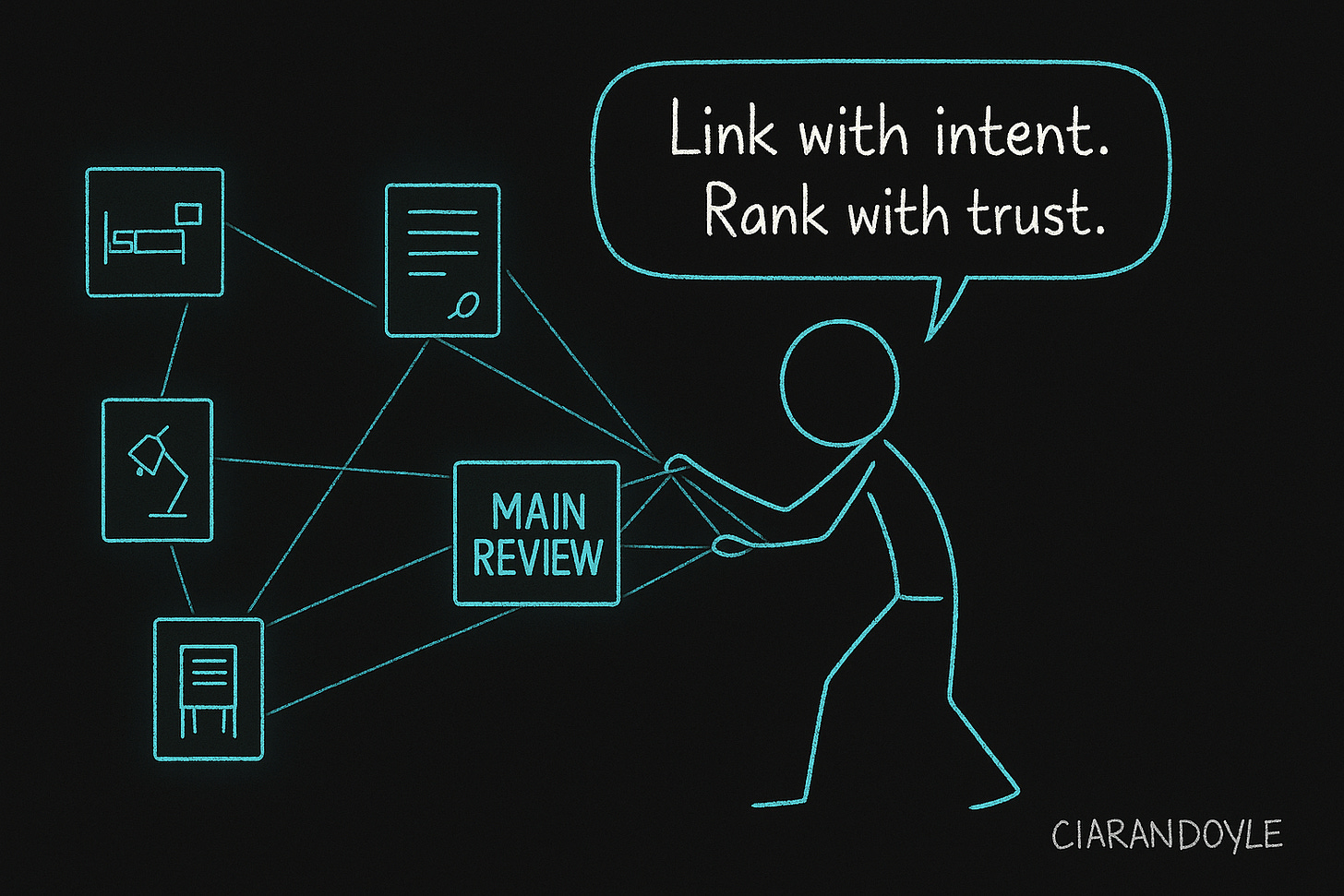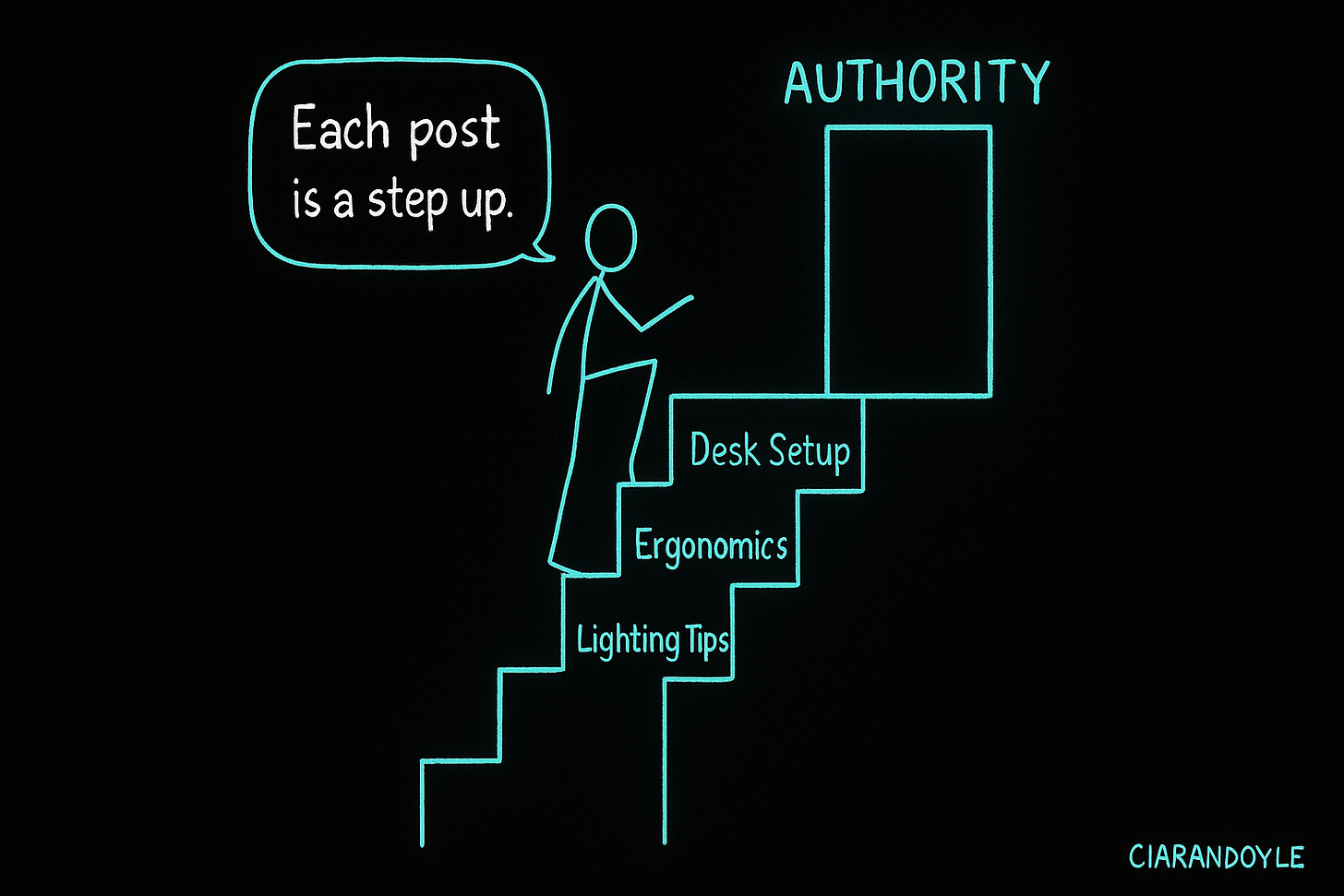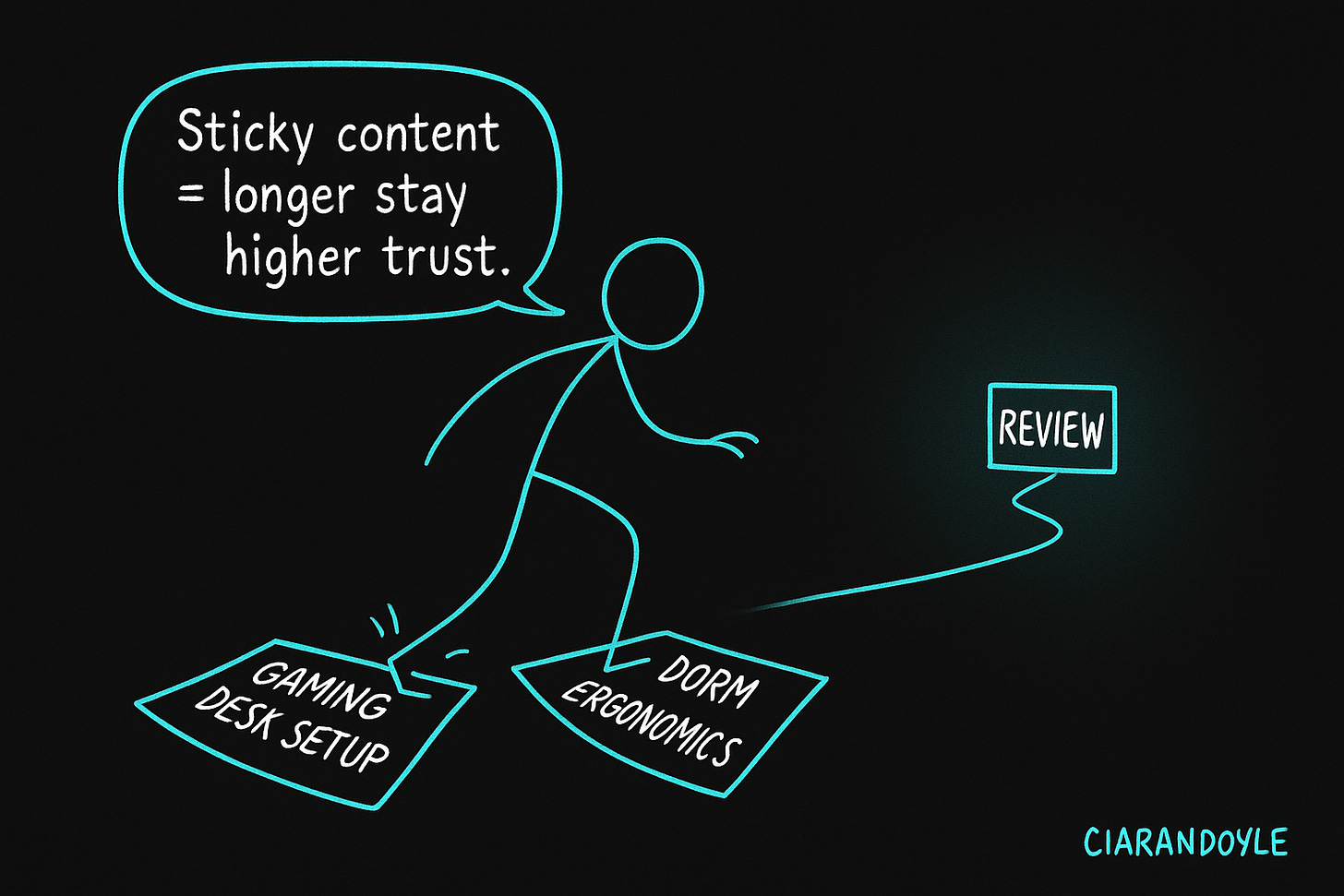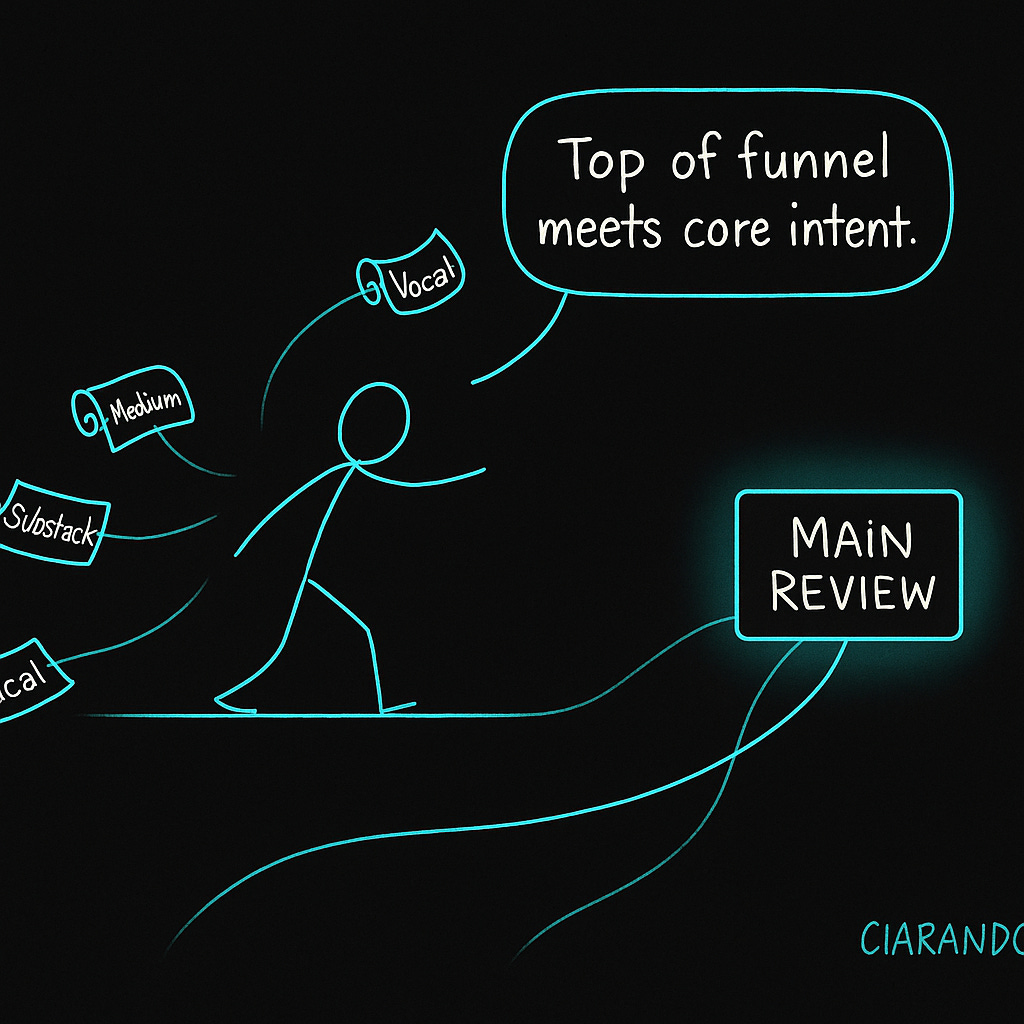What the hell is Tangential SEO, and why does it matter in 2025?
I get it. SEO sounds like ancient history.
But here’s the thing… the people still winning in affiliate content?
They’re using something called tangential SEO, even in a world run by AI search engines like ChatGPT.
Well, let me start by giving you an example…
Say you’re writing a review on “best laptops for student gamers under $1000.”
What you then do is develop tangential content like “how to set up a gaming desk”.
That’s tangential SEO. Expanding the topic without diluting your offer.
Content that is tangential to your target keywords…
This is a great example of how to use tangential SEO effectively.
Yes, even in the world that is quickly becoming dominated by AI search engines…
Why? Because it cements authority.
Most creators still think their job is to answer a question.
It’s not.
Your job is to map the entire thought process around the problem and become the source they keep returning to.
One post?
You’re just taking a swing.
But a cluster of interconnected posts?
That’s how you build trust, relevance, and rankings across the full conversation your reader already has in their head.
When I stopped writing ‘blog posts’ and started writing micro-systems, everything changed.
Tangents weren’t filler; they became leverage. Not just traffic plays, but trust-builders.
It’s not just about being found. It’s about being remembered.
Tangential Content Strategy: The Assassin’s First Strike
Here’s how to build it for maximum visibility and trust…
Results, as in… traffic, trust, and clicks where it counts.
1. Core Review Content
Your primary review is the backbone, like “best laptops for student gamers under $1000.”
This article should include in-depth comparisons, specs, pros/cons, and affiliate links to actual products.
2. Tangential Content
You then create related articles that don’t compete, but complete the topic. Example: “How to Set Up a Gaming Desk for Small Dorm Rooms.”
Content like this might include:
The best desk accessories for gamers
Ergonomic tips for long sessions
Lighting/aesthetic setups for Twitch-style vibes
Mentions of the laptops in your review (e.g., “The Acer Nitro 5 fits perfectly in smaller setups like this…”)
3. Internal Linking + Cross-Promo
This is where the magic happens… Your tangents link back to your main review. When talking about desk space, mention how one laptop is great for compact setups. When recommending LED lights, link to a bundle that includes the same laptop.
Need help writing reviews that actually rank in ChatGPT? [Start here with my free guide on Human-First Reviews →] (← links to Assassin Part 2)
4. Drive Engagement with Sticky Formats
Use visuals, infographics, or embedded TikToks to keep tangential posts sticky. The longer they hang around, the higher the chance they click into your review and convert.
Bonus: Use tools like Revid to turn blog content into TikTok-style videos that pull people into your review ecosystem.
Effective CTAs (Call to Action) can guide them towards these reviews.
5. Social Sharing: Your Distribution Layer
Here’s where most creators drop the ball. Tangents are your top of funnel. Share those “How to Set Up Your Gaming Desk” posts on Substack, Medium, or Vocal Media to catch ambient traffic. The goal? Pull them into your review world.
(Quick Pro Tip: AI like ChatGPT parses structured content better i.e: 1-5 above. Humans do too. Better structure = better parsing, indexing, and scanning.)“If you’re still thinking SEO is dead… you’re about to get left behind.”
Read: What GEO really means in 2025
Tangents aren’t fluff. They’re strategic assets.
They make your site feel human, useful, and interconnected — the exact kind of content AI engines reward now.
This isn’t 2010-style SEO. This is strategic, GEO-powered content layering that builds authority fast.
Ready for the next strike?
You’ve got the structure. Part 2 shows you how to make the reviews themselves unskippable.
Miss it, and you’re still writing like it’s 2013.
Start here with the free Human-First Review Guide… How to Write Reviews That Don’t Suck in a GEO World




